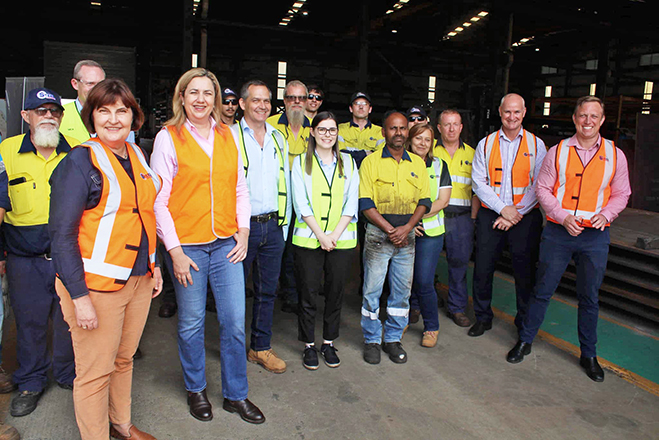


Queensland Premier Annastacia Palaszczuk was in Mackay last week to reveal further details pertaining to her announcement of a $62 billion Queensland Energy and Jobs Plan.
The plan includes the biggest pumped hydro scheme in the world to be built in the Pioneer Valley.
“This pumped hydro is going to be nation-building and it’s happening right here in Mackay,” Ms Palaszczuk said.
“It is going to set this city up for the future.
“It’s going to mean jobs; it’s going to mean more industries attracted to this region.”
The project is said to have the potential to deliver up to 5GW for 24 hours or 120GWh, which is 617 times larger than South Australia’s Hornsdale battery and 20 times larger than Wivenhoe.
The construction of the project will take place in two stages near the small community of Netherdale.
“The majority of the land is either existing cattle grazing land, or it is sugar cane farming land,” Ms Palaszczuk said.
“This project is going to be right on the doorstep for Mackay and the region.
“There will be no inundation of any national parks, as well.”
Plans will see the project affect around 50 homes and properties around Netherdale as well as the existing Mackay Eungella Road.
Minister for Energy, Renewables and Hydrogen Mick de Brenni said it’s important for the government to work closely with landowners.
“We’ve already established meetings with around 20 per cent of those landowners,” he said.
“This is a process that we take seriously, of course, and we want to be respectful of those landowners.
“We’ve researched around 1,000 sites across the state and this one stacks up as simply the best pumped hydroelectric opportunity anywhere in Queensland, in fact, it represents one of the best opportunities in the world.
“Of course, we’ll work through all of those appropriate environmental approvals, starting from today.
“There’ll be a range of other approvals that we’ll need to work through, but they are consistent with all other projects.
“Most importantly, this project delivers us a significant economic opportunity for north Queensland.”
Mr de Brenni hopes the project to be in full construction by 2025 and the first stage completed by 2032.
The announcement has been met with some opposition, with Federal Members for Capricornia and Dawson Michelle Landry and Andrew Willcox claiming they weren’t included in any discussion or consultation.
“To come out and make an announcement with zero consultation with the local Federal MPs and then immediately call for federal funding, makes me wonder if this is a serious announcement or is it just for show?” Mr Willcox said.
Ms Landry said the announcement has left her with more questions than answers.
“The Premier has guaranteed jobs for workers at coal fired power stations but there is no mention of guarantees for coal miners,” she said.
“So where does that leave job security for mine workers, their families and every small business owner in our coal mining towns.”
Local conservation groups have also raised concerns over the plan, with Mackay Conservation Group Coordinator Peter McCallum concerned about a lack of detail.
“We’re very supportive of renewable energy but we also want to see the most economic and energy efficient forms of renewable energy installed in Queensland,” Mr McCallum said.
“We’re not sure that pumped hydro is the best option into the future, and it could lead to Queensland tax payers and energy users paying more for electricity than they need to in decades to come.
“There’s no detail available to members of the public.
“We’ve known that this project was being considered for several years and you’d think that, by now, there could’ve been more detailed information released about the proposal.
“At this stage, we don’t have that detail.”
• Pumped hydro acts like a giant battery.
• It uses electricity from the grid or nearby renewables (in this case, solar) to pump water from a lower reservoir into an upper reservoir when energy prices are low.
• When energy is needed, water is released from the upper reservoir into the lower reservoir, generating energy as it passes through a turbine.
• Hydroelectricity can be generated almost immediately and at any time, so power can be fed into the grid when it is needed.